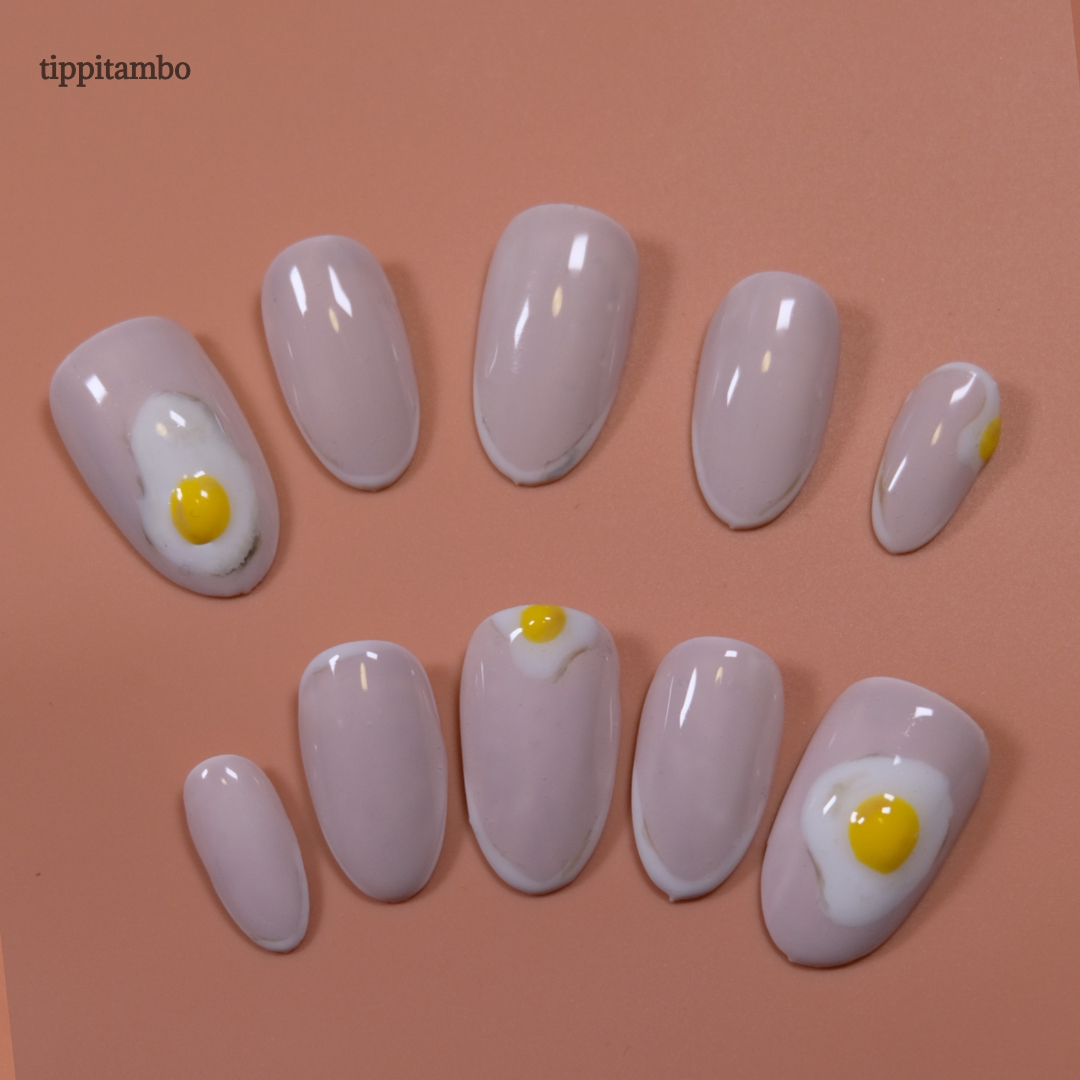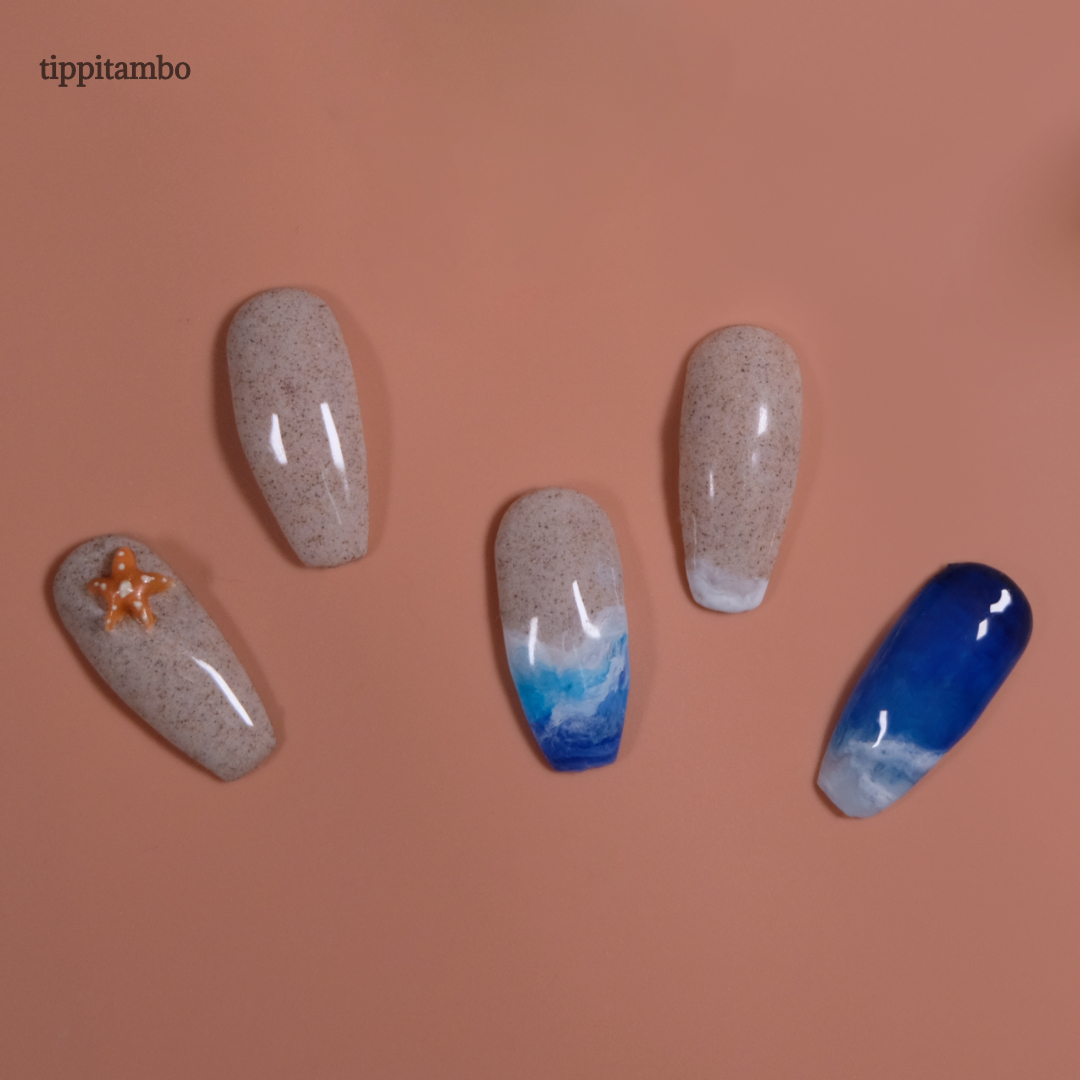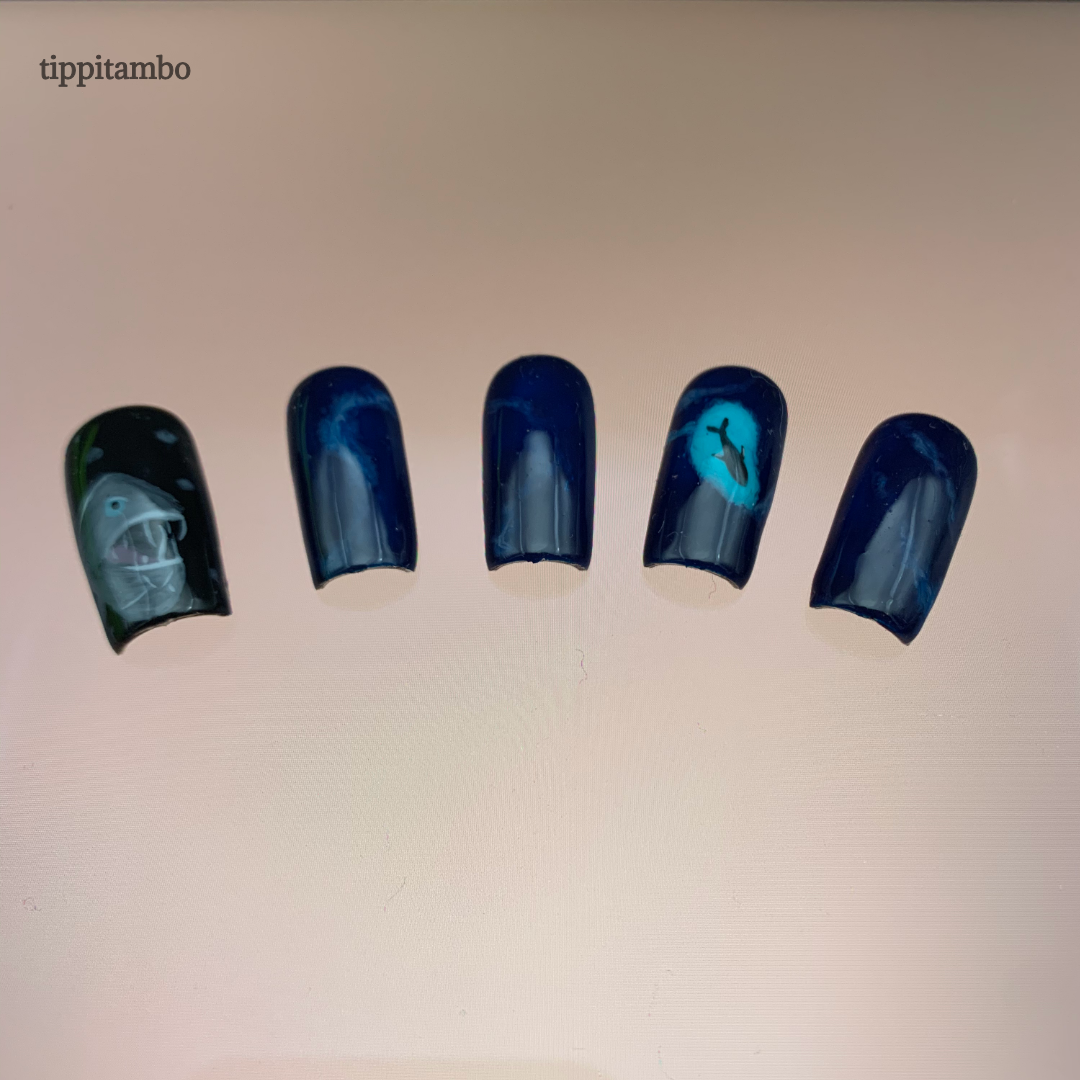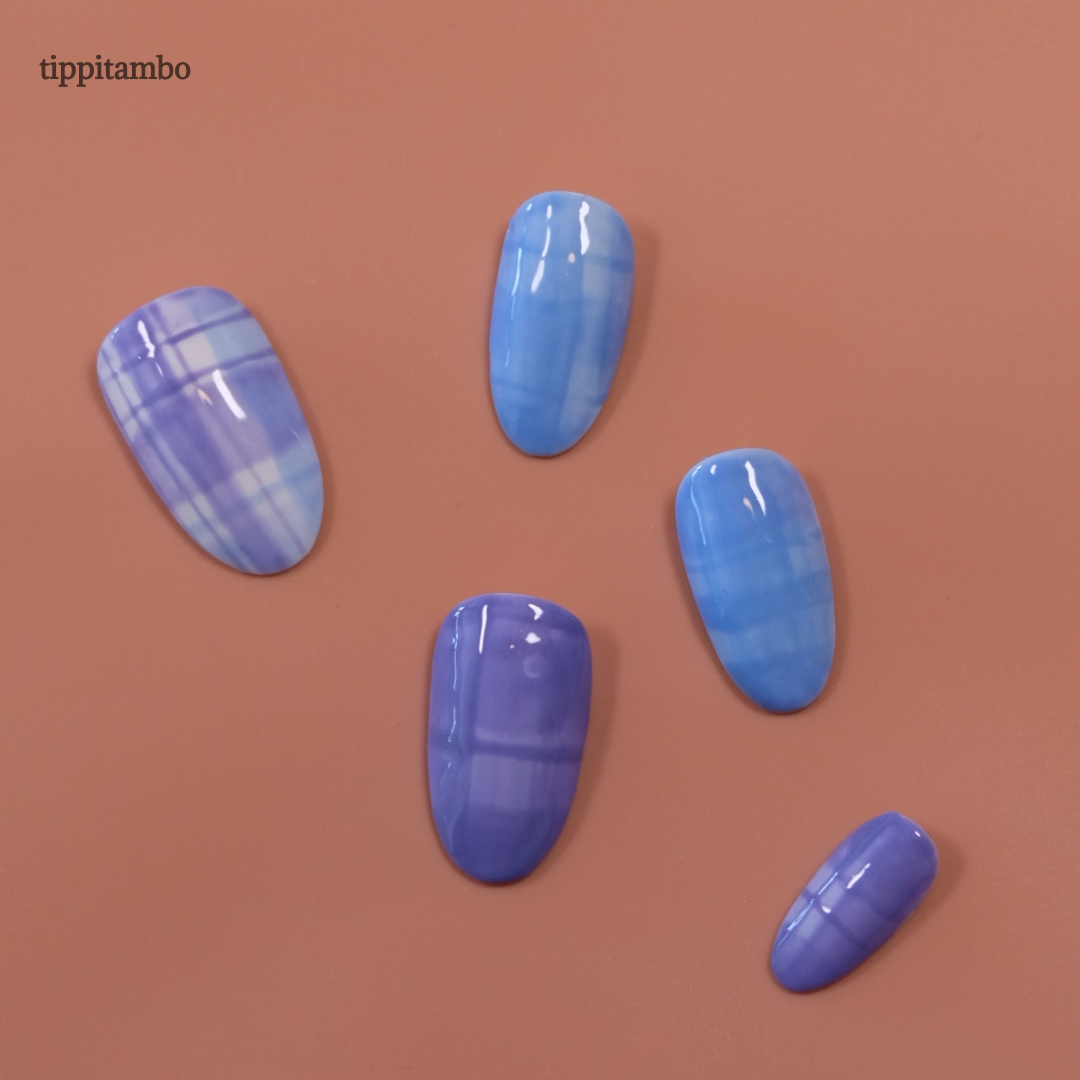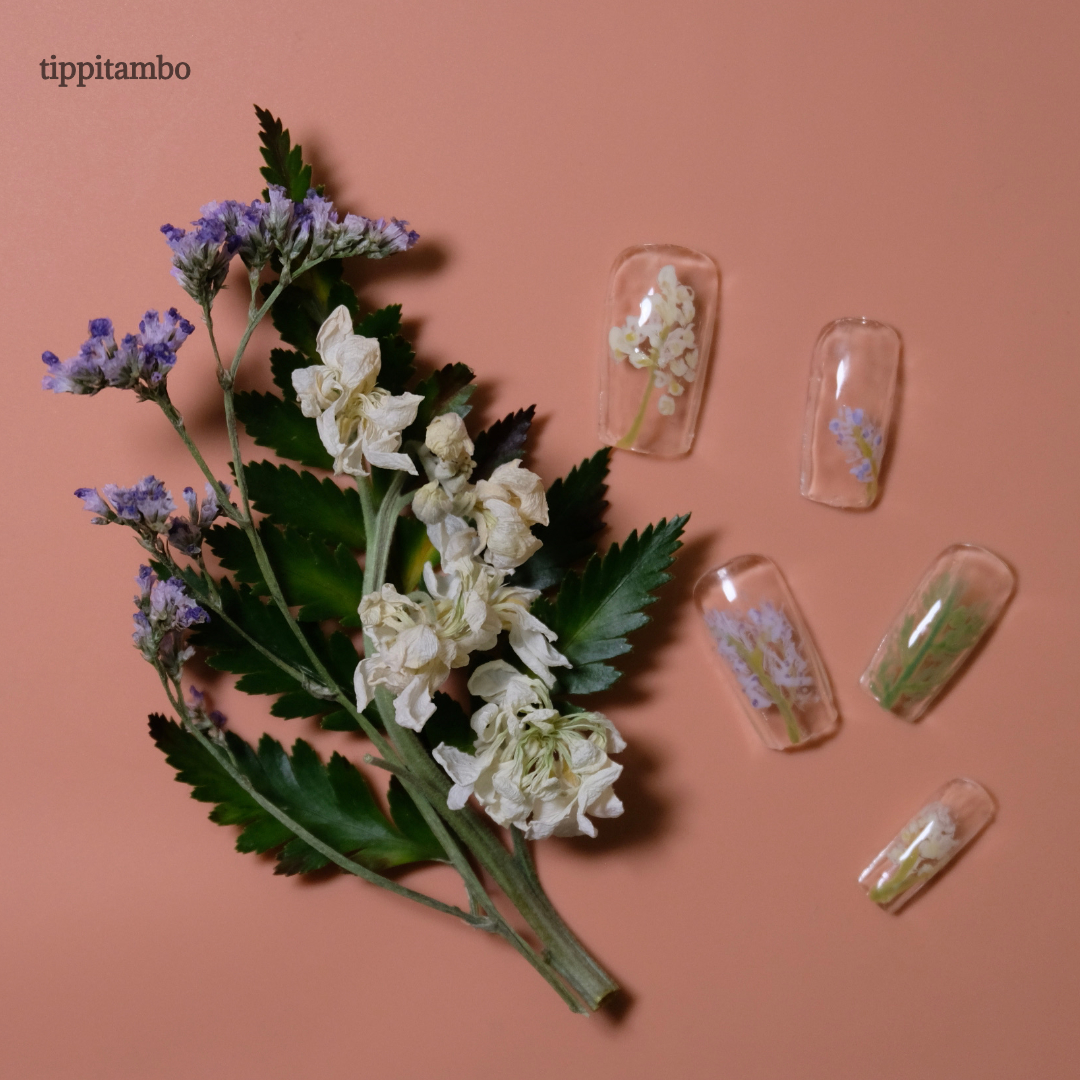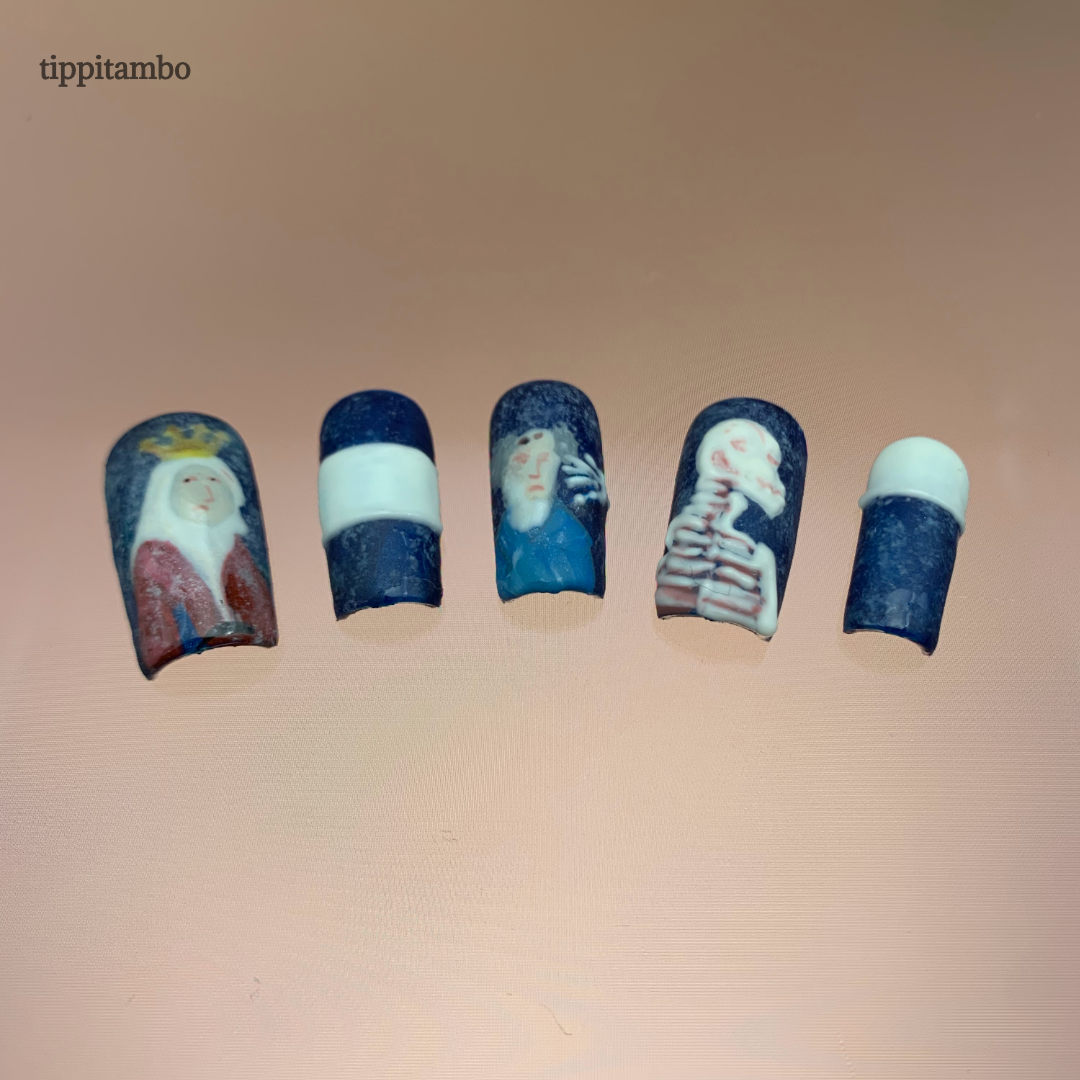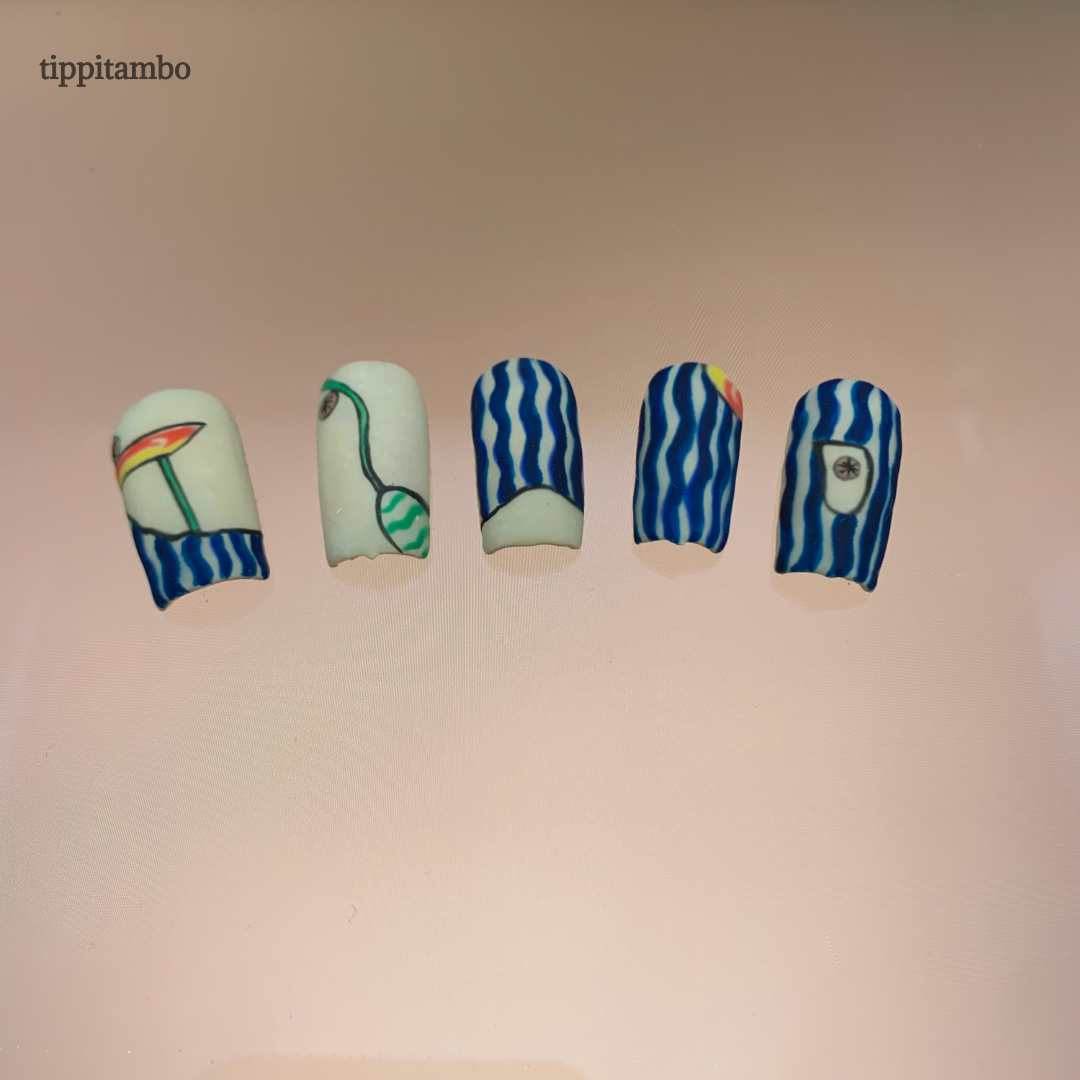This nail design was inspired by artwork by Kazimir Malevich, who painted four versions of the Black Square between 1913 (following the Russian Revolution) and 1917 (on the heels of World War 1). These paintings seem to resonate with current social and political life following #BlackoutTuesday.
The nail art tutorial below is for the revolutionary flames nail design of the pictured set. Before you begin, don’t forget to prepare your nail surface with a DIY nail cleanser!
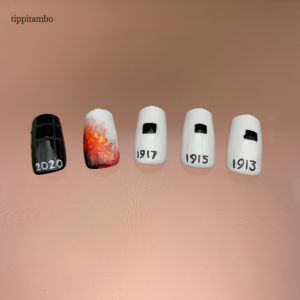
Instructions
Step 1

- Apply base coat and cure
- Apply white coat using the square brush. Cure. Reapply white coat until opaque and cure.
Step 2
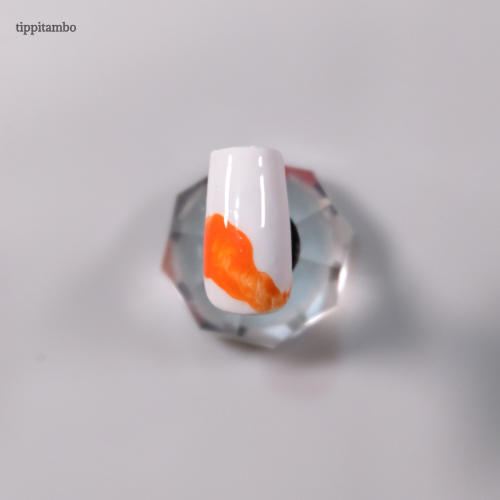
- Apply coat of mixing clear gel.
- Do not cure.
- Using the short liner brush, draw a orange horizontal line on uncured mixing clear gel.
Step 3

- Underneath the orange horizontal line, add red gel to cover corner of nail design.
- Make a 3 – 4 small strokes of yellow throughout over the red and yellow gel.
- Move the short liner brush in small circular motions over the uncured gel.
- Do not cure.
Step 4
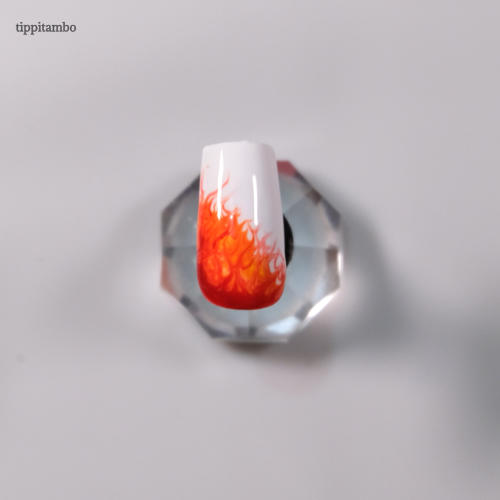
- Move short liner brush vertically on the uncured gel, from the bottom to the top of the nail in a curved motion to give the flame effect.
- Do not cure.
Step 5
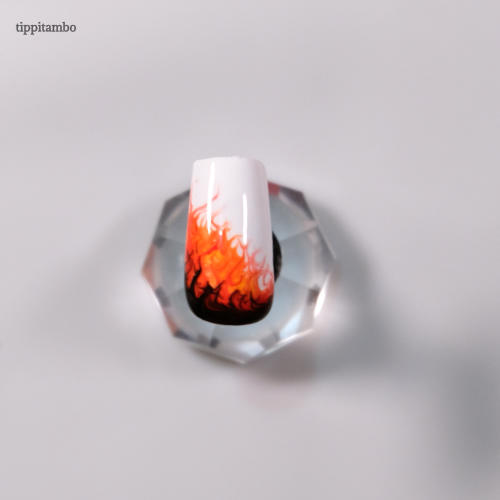
- Add black gel to the bottom corner of the nail.
- Move short liner brush vertically on the uncured gel, from the bottom to the top of the nail in a curved motion to give the flame effect.
- Do not cure.
Step 6
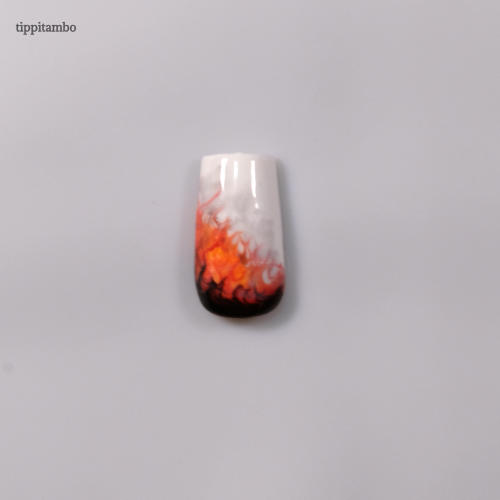
- Mix a small drop of black gel with the white gel and clear mixing gel to create a translucent gray gel color.
- Dab the translucent grey gel throughout the top of the flame to give a smokey effect.
- Cure.
Commentary
June 2, 2020 was dubbed Blackout Tuesday in an effort to raise awareness about racism. Although it’s not clear who posted the first Black Square in support of the campaign, the effort gained momentum after celebrities began to post solid black squares on their Instagram accounts in solidarity with the initiative. This was quickly replicated by many Instagram users and the result was rows and rows of millions of black squares that were posted using the hashtag #blackouttuesday.
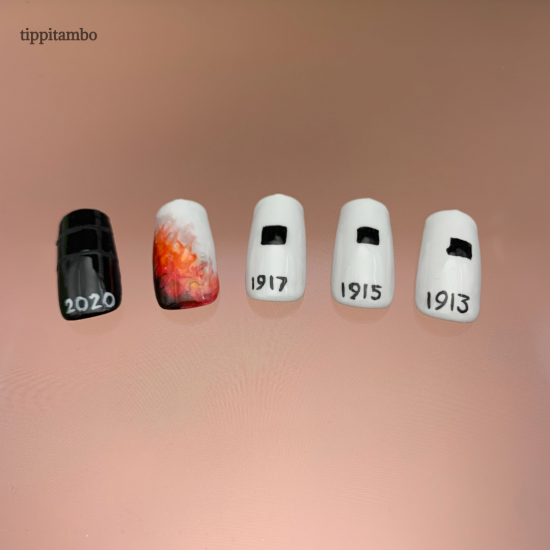
It’s notable that this campaign happened during a period of significant instability in the US linked to a deadly worldwide pandemic, painful economic fallout, and increasing calls to overturn political norms that call into question the current model that underpin our modern global society. I love a good conspiracy theory because a few years before the start of World War 1, following a social revolution in Russia where there was similar social and political instability, a Black Square also appeared on the scene.
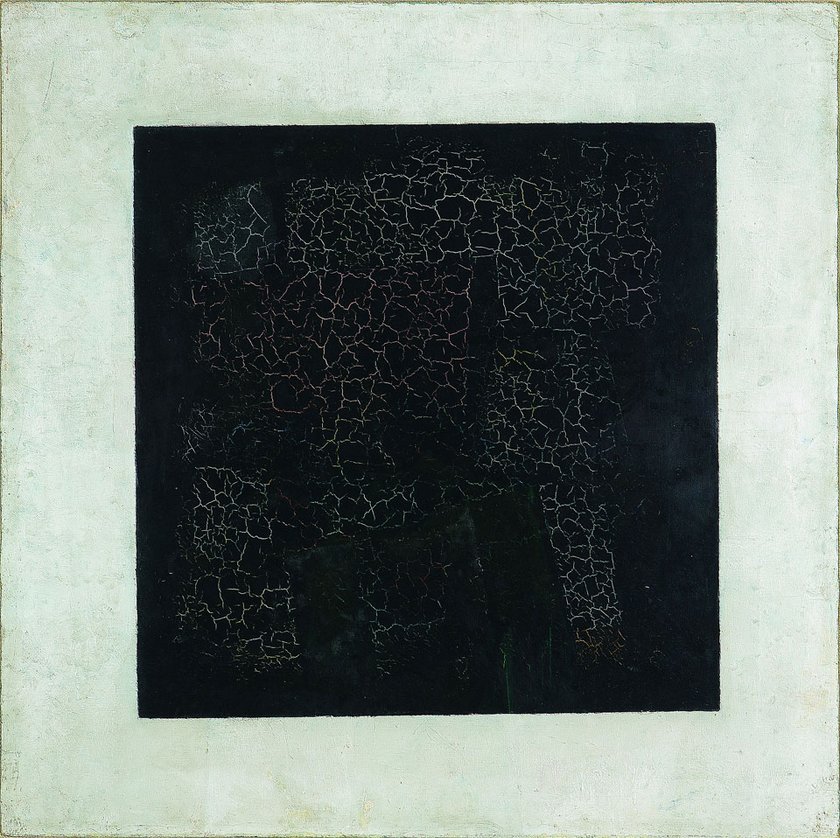
This was so coincidental that it seemed like a great idea to do a nail set on the Black Square, which was painted by a Kiev-born artist named Kazimir Malevich. Malevich painted four of these pieces between 1913 (following the Russian Revolution) and 1917 (on the heels of World War 1). It became a symbol of change, reflecting the social revolution that was happening at the time.

